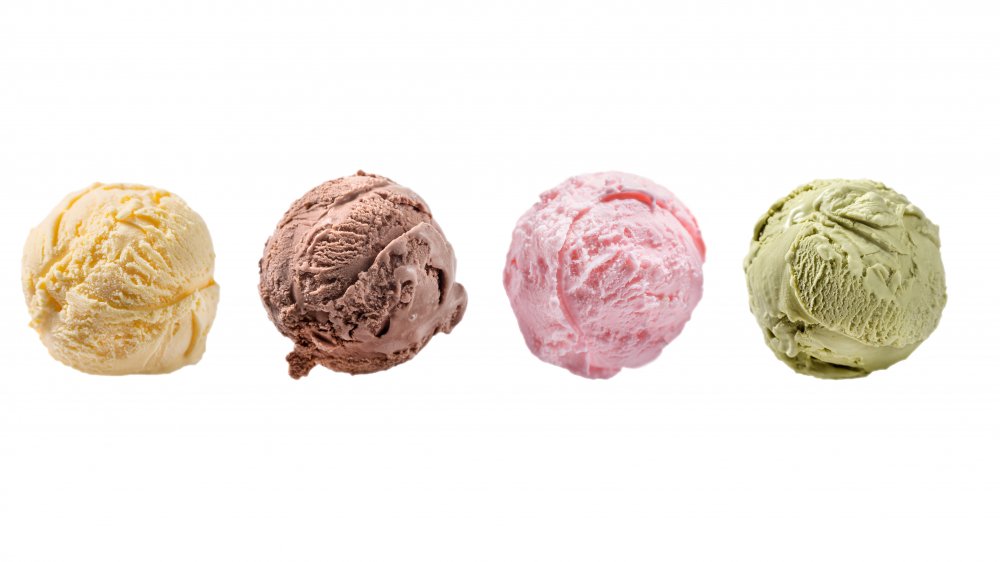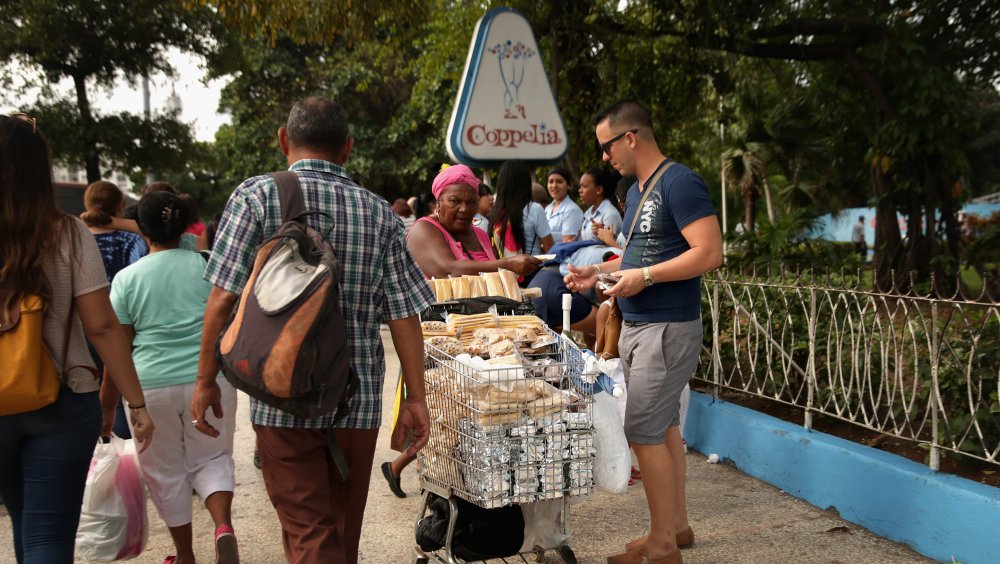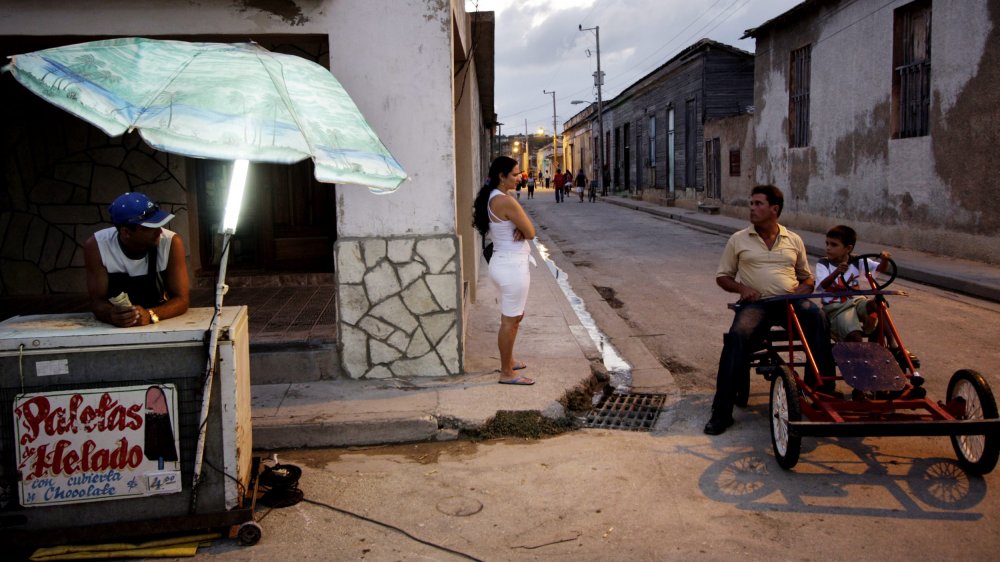The Strange Story Of Ice Cream In Cuba
Havana summers are hot, humid, and crowded. Black clouds of smoke swell from the tailpipes of 70-year-old Cuban taxis, which somehow makes everything hotter. What better relief than a scoop — or maybe five scoops — of ice cream?
There's something strange and special about ice cream in Cuba. Despite food shortages, rationing, and a decades-long trade embargo, ice cream has managed to persevere. And we're not joking about those five scoops: In Coppelia, Havana's celebrated ice cream parlor, the ensalada — a bowl of five scoops, topped with syrup and a smattering of cookies — is commonplace. Really, it's more typical to order a couple of those (via BBC).
Why is ice cream such a staple in Cuba? Its sweltering summer climate, after all, has proved to be a poor match for milk-producing Holstein cows (via Atlas Obscura). The reason involves Cuba's most iconic leader. Along with spearheading the country's socialist revolution, Fidel Castro, quite simply, had a thing for ice cream (via Saveur).
But in true Castro fashion, El Comandante decided to share his ideas with the rest of the island.
Ice cream became a revolutionary food in Cuba
While President John F. Kennedy was spooning up bowls of his favorite New England-style chowder, his sworn political rival was miles away, sipping chocolate milkshakes and slinging back scoops (via Boston Globe). Castro's love for ice cream was notorious. Colombian author Gabriel García Márquez wrote accounts of Castro swallowing 18 scoops of ice cream post-lunch (via The Atlantic). In fact, a former Cuban intelligence chief alleged that the CIA attempted to assassinate Castro via milkshake, according to Reuters. "That moment was the closest the CIA got to assassinating Fidel," Fabian Escalante told the news agency in 2007.
The Cuban revolution kicked off in 1959, and by 1962, the United States government imposed a trade embargo that still persists today. The island's economy changed irreversibly: Suddenly, Cuba lacked access to U.S.-based resources — including milk. So, Castro's tenacity and pride culminated in Coppelia — the sprawling, two-story, blue-and-white ice cream parlor that still draws crowds of ice cream aficionados decades later (via The Guardian).
Castro specifically ordered the construction of Coppelia, and he entrusted the project to fellow revolutionary Celia Sanchez. By 1966, Coppelia was open and equipped to hold 1,000 people at once with a menu of 26 flavors (via The Telegraph).
Coppelia is a cool retreat in difficult times
In earlier years, Coppelia offered guava, coconut, and pineapple flavors, according to residents' accounts to The Telegraph and The Guardian. But as Cuba entered a slew of economic hardships — a depression brought on by the Soviet Union's collapse, for example — the long list of flavors, and perhaps the quality of the ice cream, have dwindled.
However, the popularity of Coppelia, and ice cream in general, has remained strong. In 2019, the ice cream parlor closed for maintenance and reopened to celebrate Havana's 500th anniversary. According to Yoanni Sanchez, a Cuban journalist based in the capital, the grand reopening drew long lines and customers waited for hours (via 14ymedio).
In Coppelia, the ice cream is cheap: affordable for the many Cubans making a salary of $50 a month (via The Miami Herald).
But in recent years, change has reverberated throughout Havana with the legalization of private businesses (via BBC). Not far from Coppelia, privately owned cafes offer elaborate, albeit pricier options. A scoop of sweet cream or mojito ice cream at Amore, a small, brightly lit ice cream parlor, costs a couple American dollars (via Quartz). While it's not exactly a nod to Castro's socialist vision, it's a part of Cuban culture nonetheless.


